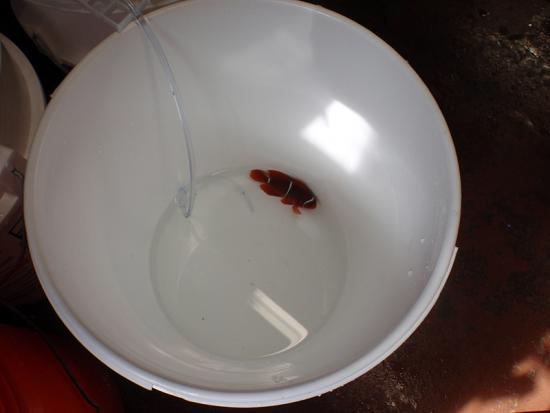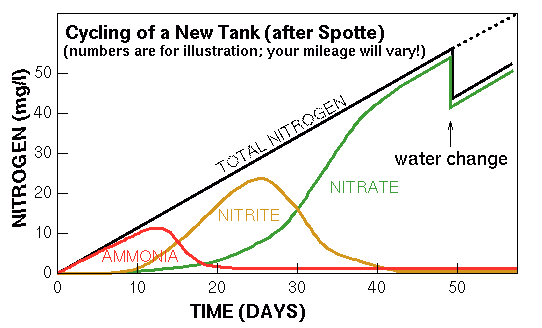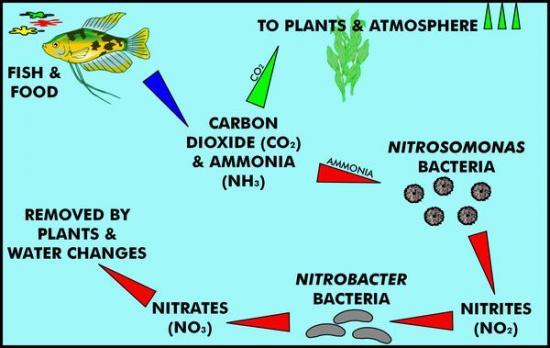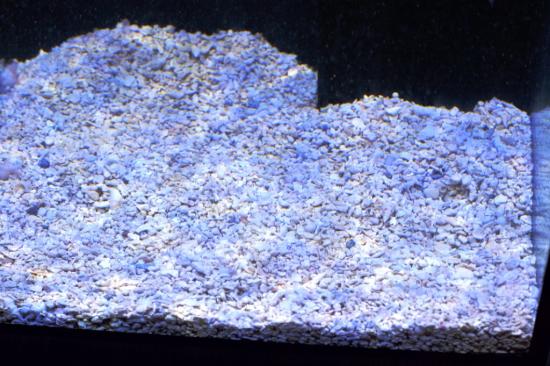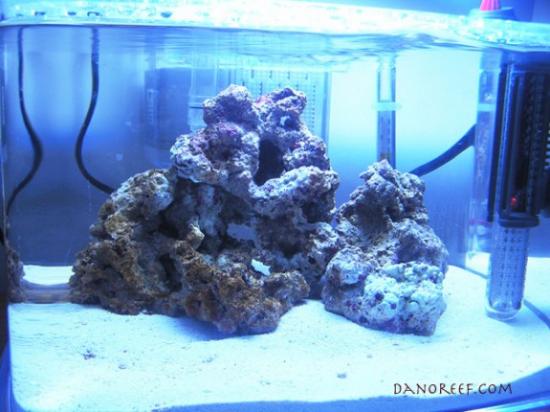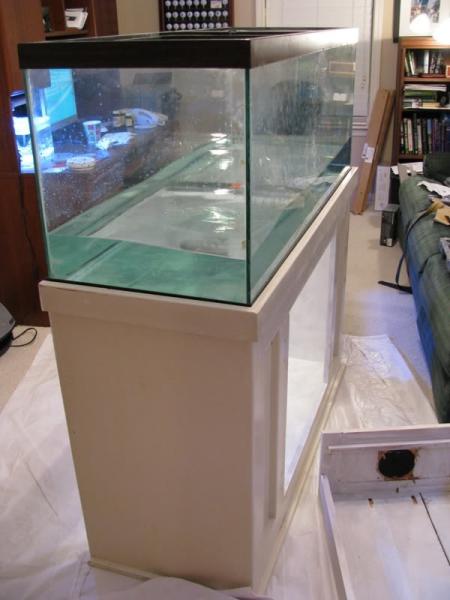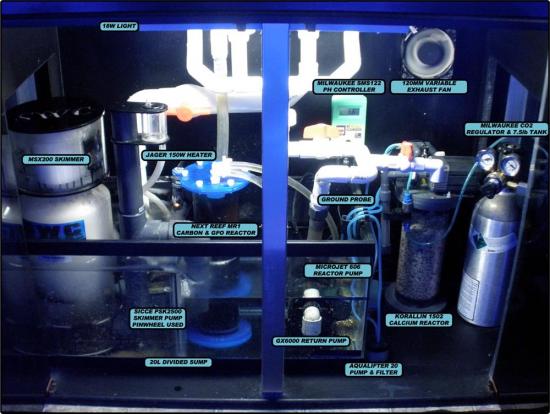-
Posts
8,253 -
Joined
-
Last visited
-
Days Won
31
Content Type
Profiles
Forums
Gallery
Everything posted by Harlequinmania
-
Scientists have expected for some time that the Arctic Ocean will be ice-free in summer by the end of this century. Researchers now say the seasonal loss of this ice sheet, a continent-sized natural barrier between species such as bears, whales and seals, could mean extinction of some rare marine mammals and the loss of many adaptive gene combinations. View the full article
-
Hi Guys, No keeping much SPS anymore, hence selling these two pack of Premium Aquatic epoxy glue i got previously from Aquafauna Supplies . One pack is un-open (unused) and the other pack i use only like 10% of it . Letting go both pack now @ $ ( 50.00 ) only More information can be found here ; Collection in CCK during night time or clementi during office hours. Thanks
-
Researchers have developed the first system equipped with hydrophones able to record sounds on the seafloor in real time over the Internet. The system detects the presence of cetaceans and makes it possible to analyze how noise caused by human activity can affect the natural habitat of these animals and the natural balance of oceans. A new EU directive on the sea has ruled that all member states must comply with a set of indicators for measuring marine noise pollution before 2012. View the full article
-
Is red seaweed a viable future biofuel? Now that a metabolic engineer has developed a strain of yeast that can make short work of fermenting galactose, the answer is an unequivocal yes. Researchers have recently identified three genes in Saccharomyces cerevisiae, the microbe most often used to ferment the sugars, whose overexpression increased galactose fermentation by 250 percent when compared to a control strain. View the full article
-

Newbie Guide to setting up a Marine Tank
Harlequinmania replied to Harlequinmania's topic in New to the Marine Aquaria Hobby
Once your tank cycling is completed, you may start adding of fish / corals into your new tank. However, patient is the other key to success in this hobby. Start adding only One or two fish at a time, and leave it for another 2 week or more during your next addition.Not only you are endangering the live stocks in your tank by stocking too fast, you may risk the danger of your tank crush for not having enough time for your system to stabilize itself with enough bacteria culture. If you have the means, setting up a quarantine tank will come in handy. Marine specimens are mostly wild caught and not used to being kept in captivity. Their journey to a dealers tank is usually much longer and much more stressful for them. Stressed out fish will usually come down with some kind of disease if they don't simply die from the whole journey to your tank. Thus having a simple quarantine tank will help to prevent diseases spread to your other tank mate as well as training it to feed before releasing it into your main tank. You may have invested valuable time and money researching the habitat requirements of the fish and corals you wish to house, and naturally you want to protect this investment by executing a The purpose of acclimation is simple: the water that the fish or corals are packaged in has different temperature, pH, and salinity parameters than your aquarium. Fish, and especially invertebrates (including corals), are very sensitive to even minor changes in these parameters, so proper acclimation is the key to ensuring their successful relocation. Also by adding a couple saltwater fish at a time, it gives your filtration system the time needed to take on the increased biological load that the new fish introduce. Your new fish probably wouldn't eat any food on the first few day in your new tank and notice for any bully or diseases for your new fish . -

Newbie Guide to setting up a Marine Tank
Harlequinmania replied to Harlequinmania's topic in New to the Marine Aquaria Hobby
"Cycling the tank" is the most important aspect of this hobby and it means that you are establishing a bacteria bed in your Biological filtration in your system to remove the toxins that the fish's metabolism creates. There are right and wrong ways to do this, and several things you can do to slow this process (which you don't want to do). There are two steps to cycling, but you don't have to do anything special for either of them. Nitrogen Cycle Firstly, your Biological filter will grow a culture of bacteria that digest ammonia and turn it into Nitrite N02 , then your filter produces bacteria that digest Nitrite N02 and turn it into relatively harmless Nitrate N03. You could cycle your tank with a small number of fish or a pcs of unwanted prawn meat to kick start the cycle. A fully cycled tank will read Ammonia 0,Nitrite 0,nitrate under 40ppm and under 20ppm or lower is best. If your using fish that you want to keep and they start showing signs of severe stress you can do a major water change to remove the N03 in the tank. The actual time the cycling takes can vary a lot as temperature,ph,whether or not you use gravel,filter media from an established tank and other factors can play an effect on how fast or slow a cycle will finish. Generally, it take about 2 ~ 4 week to complete the tank cycling progress. The Idea Water parameter for a Marine reef tank should be ; · temperature: (24°C - 27°C) · specific gravity: 1.020- 1.024 · pH: 8.0 - 8.4 · ammonia: 0 · nitrite: 0 · nitrate: 20 ppm or less(especially for invertebrates) · carbonate hardness: 7-10dKH -

Newbie Guide to setting up a Marine Tank
Harlequinmania replied to Harlequinmania's topic in New to the Marine Aquaria Hobby
Prior to adding Substrate into your tank, make sure you clean it with fresh water unless you are using Live sand. Start adding of Substrate slowly into your tank and gently use your hand to flatted the sand bed .Alternatively you may use a plastic cup, ladle or something similar to add the freshly cleaned substrate to your aquarium. Your tank might turn cloudy but it should be clear after a few hour. -

Newbie Guide to setting up a Marine Tank
Harlequinmania replied to Harlequinmania's topic in New to the Marine Aquaria Hobby
For many fish tank hobbyists, aquascaping can be one of the most enjoyable parts about setting up a fish tank. Decorating your aquarium can be quite fun, but coming up with a good aquascape is not just about making the tank look nice. You should also take into account the tank's future inhabitants when figuring out what you need to do to provide the tank with suitable place for the fish to hide, swim around in the open and glass cleaning. This is where you get to exercise both sides of your brain to try and come up with something that is not only nice to look at but something that is functional as well. The great part about live rock, aside from the biological importance of using it, is that you can use aquarium silicon sealant to shape the rocks into any type of design you desire. We now have a new term - "rockscaping". You can also use a drill to create small holes in the rock and use pvc pipes to hold them together to make columns or archways. The rockscaping possibilities are endless. Another thing you'll probably need to do is place the rock directly on the tank bottom and not on top of the sand. Sand burrowing species could get injured or worse if you place the rock on top of the sand. For this reason, you are probably going to treat your live rock like gold once you get it, because it is the most important form of biological filtration in your system, you need to and let it cycle in your tank before adding anything into your tank. The curing process can last anywhere from 2 week to 2 months or more depending on the quality of the rock when you get it. -

Newbie Guide to setting up a Marine Tank
Harlequinmania replied to Harlequinmania's topic in New to the Marine Aquaria Hobby
After determine using Sea water or Salt mix for your new setup, you are now ready to add saltwater into your new tank. Using Sea water will help to shorten the cycling time but salt mix will contain more parameter for your tank. All of the marine salt mixes out there are made slightly differently, and there is always much debate as to which salt mix is the best. Unless you're considering a reef tank, most of the commonly available mixes should serve you fine. You'll soon develop a salt mix preference after you've worked with them for a while or You can do some research in the market before your purchase. If you are using tap water for mixing salt mix, do remember to remove the chlorine and chloramine in the water using de-chlorine products.Read the directions on the salt mix package carefully and then add the salt mix slowly to room temperature water. Stir it well and test it with your hydrometer or refractometer to determine the salinity you wish to achieve.You can start to turn on your pump or wave maker to start your tank circulation. Suggested Salinity reading 1.019 - For a fish only tank but some fish may get stress over time and loss it;s nature color. 1.021 ~ 1.022 Marine fish only with corals 1.022 ~ 1.023 Fish and corals from tropical Asia country. 1.024 ~ 1.026 Fish and corals from Hawaii / Fuji ( Pacific water ) -

Newbie Guide to setting up a Marine Tank
Harlequinmania replied to Harlequinmania's topic in New to the Marine Aquaria Hobby
Setting up your Aquarium , stand and equipments. This is one of the most fun and also tiring stage which many reefer like and dislike. If you want to wash your new or used tank, wash out your tank only with fresh water only! Do not use soap or detergents, as soap residue left behind will be harmful for your saltwater fish and corals. you can test your aquarium for any leakage by filling it with fresh water to check for leaks. If it passes the leak test, drain the fresh water from the aquarium.You can start to affix your tank background at this time. For marine tanks, a black background can help the fish colors stand out more. Deep blue is another popular color choice and it can help create the illusion of depth. Next you can start fixing up your equipment in your sump tank to test it's functionality and any leakage from the equipments with fresh water before filling the tank later with saltwater. -

Newbie Guide to setting up a Marine Tank
Harlequinmania replied to Harlequinmania's topic in New to the Marine Aquaria Hobby
Do as much research as possible on this hobby to determine what you want to keep and the basic need to sustain it. You can find many information on this hobby in Books, internet or here in SRC . Preparing a checklist will help you to determine the equipment you need and the budget you need for your first aquarium setup.< The checklist should consist of some of the basic key reefing equipments as follows; -Tank size -Thickness of glass ? -Sump Tank -Types of aquarium glass ? -Types of Aquarium stand ? ( Wood / stainless steel ) -Placement of tank in the house ( Do consider factors such as; ease of access for tank maintaining , nature sun light , viewing angle, temperature , power point ect.. -Types of lighting -Types of Skimmer ( In-sump / Out-sump ) - Chiller -Live rock -Sea water or Salt Mix ? -Aquarium substrate ( Live Sand / fine sand / bare bottom / Deep sand bed or crushed coral chips ) ? -Filter media -Aquarium background - Pumps -Power head - Wave maker Protein skimmer ( The most important equipment in the hobby which you cannot miss ) Test kits - Algae scrubber - Fish net - Clean buckets for changing of water. -Aquarium thermometer -Quarantine Tank ? -Saltwater Hydrometer or even better a refractometer to check water salinity ? - Piping and valves. - Fluidized reactor - Calcium reactor - De-nitrator - Chemical filtration media ( Active carbon , P04 remover media, N03 remover media ect.. ) - Ozone 03 - Optional but definitely recommend getting a Reverse Osmosis or RO/Deionization filter for the make-up water. - Power Strip -Power consumption of equipment ? -
Like what we do in life, if we fail to plan, we plan to fail. Out of all the potential problems that can occur in our aquariums, many can be avoided if we have plan ahead. Keeping a successful Marine tank require the same philosophy as well and knowledge is the key in the success in this hobby. Always take your time when designing and building a new aquarium system.Before committing or buying your fish tank, firstly decide what kind of system do you want to keep ? This would enable you to plan you tank setup with the equipments you need and your budget ect.. Using only high quality well-built equipment, starting with the aquarium itself. Buying your tank from a reputable tank builders who craft their aquariums with the proper glass/acrylic thickness suitable for your tank system will make alot of different with years to come. Making sure all your slip PVC joints are glued correctly; use Teflon tape on all threaded connections. A small leak can become a big problem if it is not attended to ect. Check the volume of your sump to ensure it will hold excess water in case the power fails and your return pumps shut off as you do not want a flooded living room . There are basically a few system in this hobby ; 1) Fish Only tank are the simplest and easier to start a marine tank, but it can be upgraded to a more complex system if you decided to keep more dedicated species. 2) Reef Tank - Require more dedicated care and planing in the equipment and tank design setup in order to tackle the Ammonia, N02 , P04 and N03 in the system .
-
Every year between May and July, enormous shoals of the sardine Sardinops sagax give a splendid show as they migrate off the coasts of South Africa, performing their Sardine Run. They are subjected to relentless attack by predators of all kinds -- sharks, dolphins, sea lions, whales, birds, fishermen. Although well known to the general public, this wholesale migration is still not well understood scientifically. Researchers have now examined the different hypotheses put forward to explain the event. View the full article
-
Every year between May and July, enormous shoals of the sardine Sardinops sagax give a splendid show as they migrate off the coasts of South Africa, performing their Sardine Run. They are subjected to relentless attack by predators of all kinds -- sharks, dolphins, sea lions, whales, birds, fishermen. Although well known to the general public, this wholesale migration is still not well understood scientifically. Researchers have now examined the different hypotheses put forward to explain the event. View the full article
-
It is said that the first refugees of climate change will come from the Pacific. In the midst of this ocean?s tropical regions are scattered 50,000 small islands, 8,000 of them inhabited. They are particularly vulnerable to the impacts of global warming. These effects include rising sea-water levels, drought and diminishing stocks of freshwater. View the full article
-

Nice aqua scaping concept aquarium in Niigata
Harlequinmania replied to a topic in General Reefkeeping_
Awesome layout. ! -
Russ goes behind the scene at Todd Melman’s coral farming facility, Coral Reef Systems. View the full article
-
Terry discusses this issue and makes a call to our readers for subjects that they would like to see covered in 2011. View the full article
-
It's important to know what crabs are okay and which aren't. Unfortunately, while there are a few good ones, most of them are definitely off limits for reef aquarists, so I'll give you some basic information about crabs in general and cover the more common types you'll likely come across. Hopefully it will help you decide what to buy or not buy, or what to leave in or get out. View the full article


